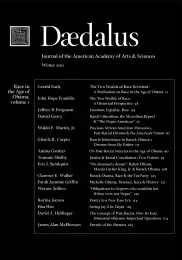Michelle Obama, Beyoncé, Race & History
In this essay, Griffin brings to the fore two extraordinary black women of our age: First Lady Michelle Obama and entertainment mogul Beyoncé Knowles. Both women signify change in race relations in America, yet both reveal that the history of racial inequality in this country is far from over. As an Ivy League-educated descendant of slaves, Michelle Obama is not just unfamiliar to the mainstream media and the Washington political scene; during the 2008 presidential campaign, she was vilified as angry and unpatriotic. Beyoncé, who controls the direction of her career in a way that pioneering black women entertainers could not, has nonetheless styled herself in ways that recall the distinct racial history of the Creole South. Griffin considers how Michelle Obama's and Beyoncé's use of their respective family histories and ancestry has bolstered or diminished their popular appeal.
Late in the evening on January 20, 2009, newly sworn-in President Barack Obama and First Lady Michelle Obama made an appearance at The Neighborhood Ball. One of ten balls they would attend that night, The Neighborhood Ball was the first of its kind. Conceived as a “people’s ball,” a celebration for ordinary citizens and the residents of Washington, D.C., it launched the administration’s efforts to establish a relationship with the city and to make the White House itself more accessible to the broader public. The ball featured such popular music entertainers as Shakira, Alicia Keyes, will.i.am, Mary J. Blige, and Stevie Wonder.
In the most memorable part of the evening, superstar Beyoncé Knowles serenaded the first couple during the ceremonial “first” dance. Because the event was televised live on ABC, the staging was dramatic. The first lady and president stood alone on a circular stage. Cued by the lush instrumental introduction to the R&B classic “At Last,” the couple began to dance atop the presidential seal that had been painted on the stage floor. Across from them, on a stage in the middle of the audience, the elegantly clad Beyoncé began to sing Etta James’s timeless song. Smiling sweetly at the couple like Lena Horne’s gorgeous Good Witch Glenda in The Wiz, Beyoncé began her performance in a stately manner. Mid-song, she reached into the guttural depths of her range to pull from the deep traditions of Black American music and, in doing so, expressed a range of emotions, from . . .
